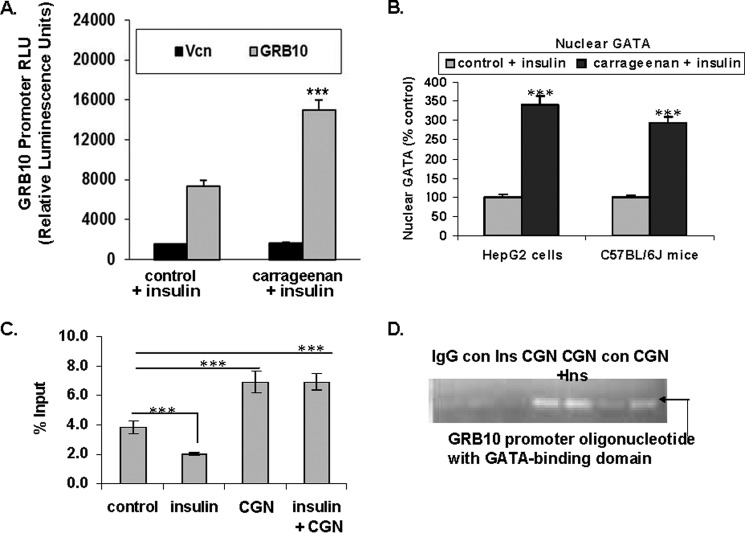FIGURE 5.
Carrageenan treatment increases GRB10 promoter activity in HepG2 cells. A, treatment of HepG2 cells with carrageenan after transfection of the cells with the GRB10 promoter in a R. reniformis luciferase reporter demonstrated an increase to more than twice the baseline in the luciferase signal (*** for p < 0.001, n = 6). Vcn, vector control. B, oligonucleotide binding assay showed that the binding of nuclear GATA protein to the GRB10 promoter oligonucleotide that encompasses the GATA2 binding site increased to 341 ± 21.5 and 294 ± 15.3% of the baseline levels in carrageenan-treated HepG2 cells and mouse hepatic tissue, respectively (*** for p < 0.0001; unpaired t test, two-tailed; n = 6). C, ChIP assay was performed with specific GATA2 antibody following carrageenan (1 mg/liter × 24 h; with 4 h in serum-free medium) or insulin (20 nmol/liter × 10 min) or combined carrageenan and insulin in the HepG2 cells. Carrageenan either alone or in combination with insulin increased the GATA2-bound DNA. DNA recovery increased from baseline control value of 3.82 ± 0.42 to 6.90 ± 0.73% after carrageenan exposure (*** for p < 0.001; n = 6) and declined following insulin exposure to 2.00 ± 0.08% (*** for p < 0.001, n = 6). D, agarose gel electrophoresis of the PCR product demonstrates increased band density following carrageenan either with or without insulin exposure. CGN, carrageenan; con, control; GRB, growth factor receptor-bound protein; Ins, insulin.

